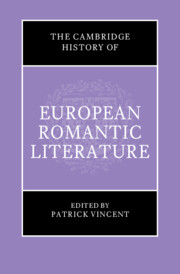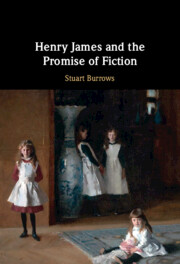146 results
1 - Hannibal and Scipio on Themselves
-
- Book:
- Hannibal and Scipio
- Published online:
- 05 September 2024
- Print publication:
- 26 September 2024, pp 9-40
-
- Chapter
- Export citation
Chapter 13 - Letitia Elizabeth Landon, Chronicler of the 1830s
-
-
- Book:
- Nineteenth-Century Literature in Transition: The 1830s
- Published online:
- 30 May 2024
- Print publication:
- 06 June 2024, pp 284-303
-
- Chapter
- Export citation
The Report Versus the Transparency Models of Appreciation: The Case of Comics
-
- Journal:
- Canadian Journal of Philosophy , FirstView
- Published online by Cambridge University Press:
- 20 May 2024, pp. 1-11
-
- Article
- Export citation
Continuous Pasts, Arrested Futures: Memory, Fiction, and the Postcolonial Condition in Africa
-
- Journal:
- Cambridge Journal of Postcolonial Literary Inquiry , First View
- Published online by Cambridge University Press:
- 17 May 2024, pp. 1-8
-
- Article
-
- You have access
- Open access
- HTML
- Export citation
Chapter 10 - 2001: Argentine Narrative in the New Millennium
- from Part I - Literary Dates
-
-
- Book:
- A History of Argentine Literature
- Published online:
- 09 May 2024
- Print publication:
- 16 May 2024, pp 147-162
-
- Chapter
- Export citation
Chapter 3 - Worlds Otherwise
- from Part II - Probable Realisms
-
- Book:
- The Art of Uncertainty
- Published online:
- 29 February 2024
- Print publication:
- 07 March 2024, pp 109-151
-
- Chapter
- Export citation
Chapter 4 - Approximations
- from Part II - Probable Realisms
-
- Book:
- The Art of Uncertainty
- Published online:
- 29 February 2024
- Print publication:
- 07 March 2024, pp 152-201
-
- Chapter
- Export citation
2 - Kinds of Irony: A General Theory
- from Part II - The Scope of Irony
-
-
- Book:
- The Cambridge Handbook of Irony and Thought
- Published online:
- 20 December 2023
- Print publication:
- 07 December 2023, pp 17-37
-
- Chapter
- Export citation
Introduction
-
- Book:
- Henry James and the Promise of Fiction
- Published online:
- 26 October 2023
- Print publication:
- 09 November 2023, pp 1-24
-
- Chapter
- Export citation
Learning finance through fiction: ‘Cecilia’ and the perils of credit
-
- Journal:
- Finance and Society / Volume 1 / Issue 1 / 2015
- Published online by Cambridge University Press:
- 09 November 2023, pp. 61-74
-
- Article
-
- You have access
- Open access
- Export citation
3 - The Fact of Fiction
- from Part I
-
-
- Book:
- When the People Rule
- Published online:
- 23 November 2023
- Print publication:
- 09 November 2023, pp 57-72
-
- Chapter
-
- You have access
- Open access
- HTML
- Export citation

The Cambridge History of European Romantic Literature
-
- Published online:
- 10 January 2024
- Print publication:
- 09 November 2023

Henry James and the Promise of Fiction
-
- Published online:
- 26 October 2023
- Print publication:
- 09 November 2023
Chapter 8 - Truth, Fiction and “Undisputed History”
- from Part IV - Time, Truth and History
-
- Book:
- The Literary Criticism of Samuel Johnson
- Published online:
- 07 September 2023
- Print publication:
- 21 September 2023, pp 143-156
-
- Chapter
- Export citation
Chapter 23 - History
- from Part III - Themes and Influences
-
-
- Book:
- W. G. Sebald in Context
- Published online:
- 24 August 2023
- Print publication:
- 07 September 2023, pp 202-209
-
- Chapter
- Export citation
Chapter 31 - Sebald Scholarship
- from Part IV - Reception and Legacy
-
-
- Book:
- W. G. Sebald in Context
- Published online:
- 24 August 2023
- Print publication:
- 07 September 2023, pp 277-286
-
- Chapter
- Export citation
Chapter 16 - Censorship
- from Part IV - Making the Modern Nation
-
-
- Book:
- The Nation in British Literature and Culture
- Published online:
- 20 July 2023
- Print publication:
- 10 August 2023, pp 276-291
-
- Chapter
- Export citation
Chapter 2 - The Stance of Enquiry
-
- Book:
- Plato's <i>Charmides</i>
- Published online:
- 20 July 2023
- Print publication:
- 10 August 2023, pp 30-59
-
- Chapter
- Export citation
Chapter 5 - Lynchpins of Sovereignty
- from Part I - Origins Revisited
-
-
- Book:
- Diaspora and Literary Studies
- Published online:
- 20 July 2023
- Print publication:
- 10 August 2023, pp 95-111
-
- Chapter
- Export citation
Chapter 3 - Not Yet the Android
- from Part I - Blended Bodies
-
-
- Book:
- Body and Machine in Classical Antiquity
- Published online:
- 13 July 2023
- Print publication:
- 27 July 2023, pp 70-104
-
- Chapter
- Export citation

